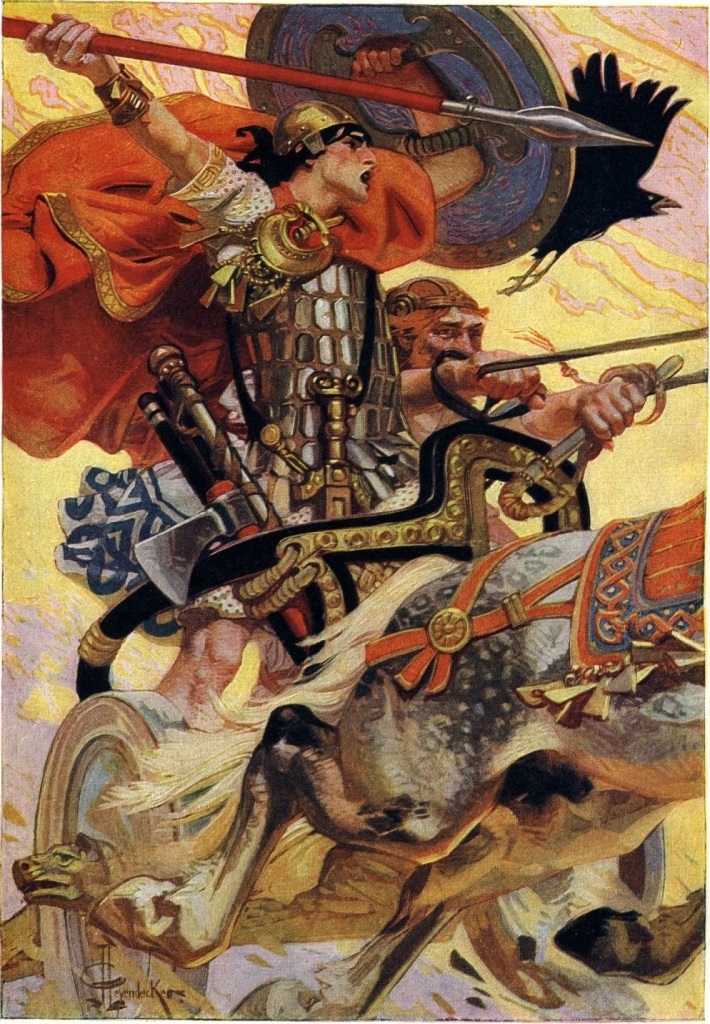Eleventh Stop: Cuchulainn’s Castle
Following the path of “Cuchulainn”, an Irish folk hero and mythological warrior, was one of the many exciting adventures we experienced on our quick jaunt through the Emerald Isles of Ireland (read more about it here). From birth to death we followed Cuchulainn’s epic story to real life places in the Irish region of Louth, a land famous for its legends. Our final destination on that particular journey was the town of Dundalk, where it’s said that the mighty Cuchulainn spent his childhood and grew up to become a great hero.
Just outside the modern town of Dundalk stands a tall but relatively small fortress upon a huge, 10 metre high earthen mound, encircled by a wide ring of earth. Though it is believed that the original village of “Dún Delga”, where Cuchulainn was born, once flourished around the site of the castle, the earthwork defenses and the tower on its summit are both from an entirely different age. Around 1180 an invasion force of Normans, having arrived in Ireland, created the earthen defenses at Dún Delga (that still exist to this day) as part of their “motte-and-bailey” castle. It was only much later, in 1780, when the Gothic-style fortress seen today was built by a local merchant named Patrick Byrne. Patrick was also known to have done a bit of smuggling on the side, which is why some call it the Pirate Byrne Castle.
Cuchulainn’s Castle is a perfect example of a ‘motte-and-bailey’ design. During their invasion of Britain in 1066, the Normans designed an effective fortress that was cheap, easy, and quick to build with an unskilled workforce. The Normans conquered lands as their armies swept along the United Kingdom and swiftly raised these motte-and-bailey castles to maintain their dominance. The Norman fort would have been a timber tower built upon the “motte” or mound, with an enclosed courtyard or “bailey”, surrounded by a defensive ring of earth and an outer ditch. Cuchulainn’s Castle, the stone tower built by Patrick Byrne, was created principally as a display of wealth and a summer home for the rich Mister Byrne, not as a defensible fort.
It was around the time of Christ when the stories of Cuchulainn around Dún Delga took place. It is written in theUlster Cycle that the great hero Cuchulainn single-handedly fought off invaders into the land of Ulster whilst all the other fighting men were lying in bed, sick from a curse. In the tale, “The Cattle Raid of Cooley”, Queen Medb of Connaught sought a prized bull from the town of Cooley in Ulster and would stop at nothing to retrieve it. When bribery didn’t work, she gathered a massive armed force of 9000 men and declared war on the Ulstermen, completely confident in her victory. As Queen Medb marched on Ulster, Cuchulainn picked off the enemy one by one with his sling, day after day, and would challenge all of Medb’s greatest warriors to single combat. After much grief and the deaths of thousands, Cuchulainn managed to stall Medb’s army long enough for the warriors of Ulster to awaken from their curse and rise to battle. What was left of Medb’s army was beaten back and forced to retreat, leaving the land of Ulster safe from harm.

